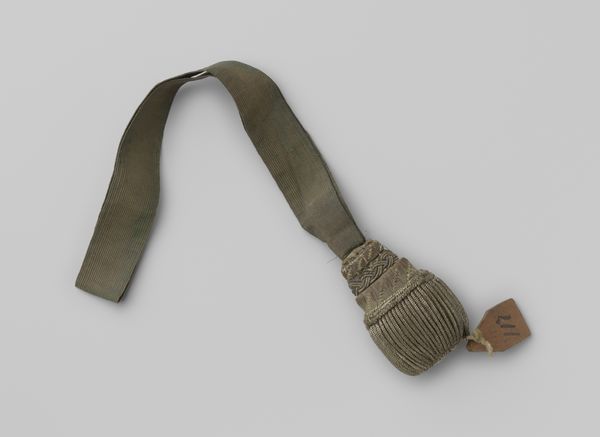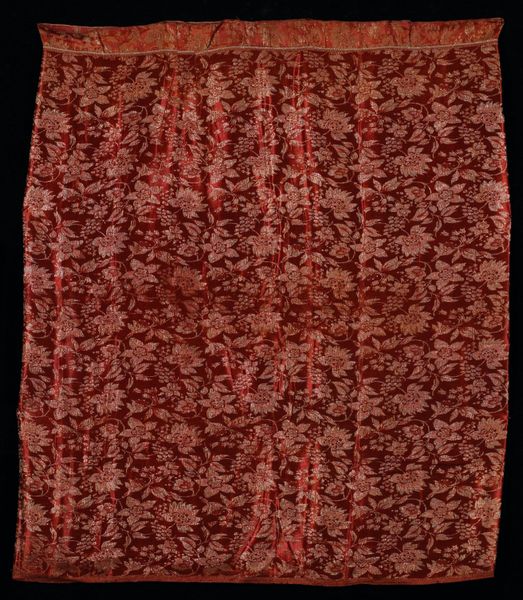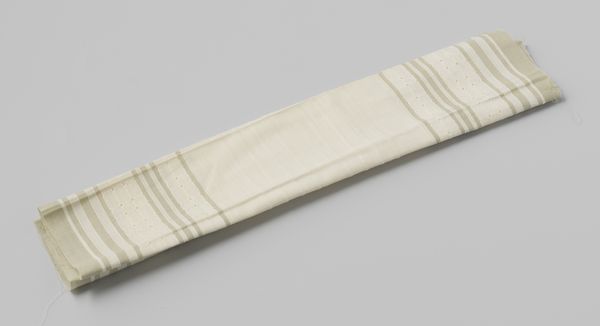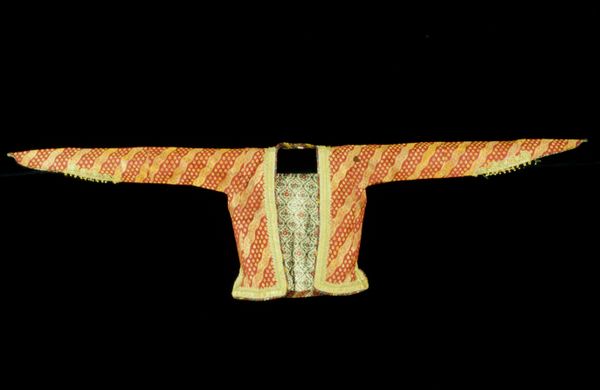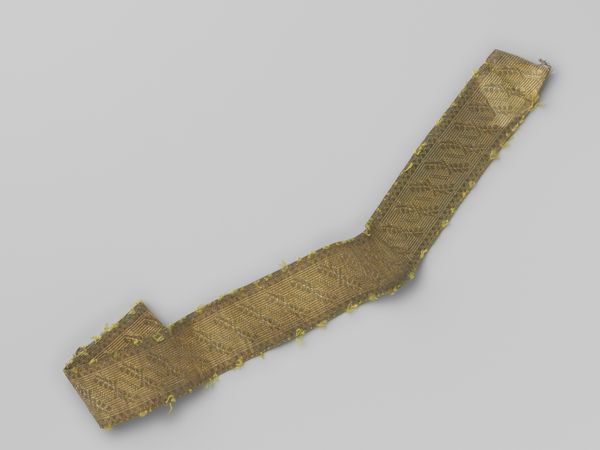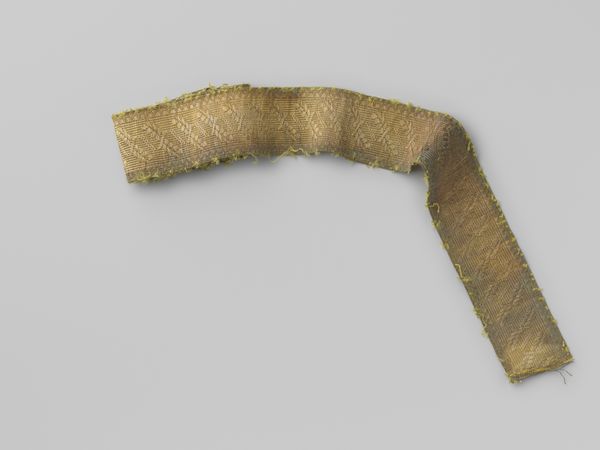
silk, weaving, textile
#
silk
#
weaving
#
textile
#
orientalism
#
decorative-art
Copyright: Public Domain
Curator: Look at this intriguing silk sash, created sometime in the 18th century. The Minneapolis Institute of Art acquired this textile as an example of "orientalism" in decorative art. What strikes you when you look at it? Editor: Immediately, I’m drawn to the contrasting textures. The central length has an almost watery, shimmering quality created by the delicate vertical lines, but those dark, dense stripes at the end suggest a different story, almost like a visual interruption. Curator: Precisely. Textiles like this sash were often commissioned or acquired by Europeans as tokens of their travels to, or imaginations of, the East. How does the sash perform or resist those power dynamics? Editor: It is that very composition which complicates easy readings. On the one hand, you could say the entire piece harmonizes through consistent bands and careful stitching, like a formal echo. However, the dramatic shift in color and pattern also causes tension, disrupting any singular identity. Curator: The specific designs were not necessarily authentic to the cultures they were meant to represent, reflecting the fantasies of the patrons and the exoticizing lens of the West, so authenticity becomes quite layered and complex. This piece also presents itself as decoratively valuable in the courts it may have been displayed in. Editor: True. If we consider the linear progression, that interruption might even be a key. Its darker shades almost absorb the light, compared to the airy openness elsewhere. Curator: Given that sashes such as these had real social currency as commodities, it makes me consider what these trade routes really mean when considering the hands of labour needed to produce them, or the people who used them in various court circles. Editor: And in a strange way, that thought circles us back to its aesthetic impact. Its texture beckons close examination, doesn’t it? Curator: Definitely. I wonder about this item's presence as a form of global exchange. Editor: Absolutely, a gorgeous little item that is filled with questions surrounding production, ownership, and stylistic integrity!
Comments
minneapolisinstituteofart about 2 years ago
⋮
Folded in half and wound around the waist, the cummerbund style, this sash would add considerable girth, reinforcing the grand stature of the wearer. In addition, the elaborately woven pattern and costly metallic threads would communicate social status as well as wealth, all important messages in a society that valued ostentatious display as an indication of personal power. This sash represents the historic trade connections between Central Europe and the Middle East. Although the fabric was woven in Persia, it was designed specifically for the Polish market. Later in the century, weaving centers in Poland, Lithuania and France began to cater to the Polish aristocracy and the wealthy merchants who favored this style.
Join the conversation
Join millions of artists and users on Artera today and experience the ultimate creative platform.
